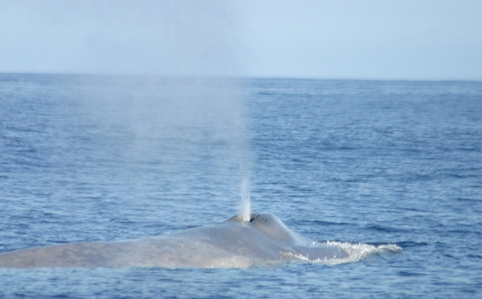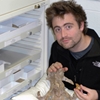General Description
Upper body blue-grey, paler underneath. Lines (throat pleats) underneath from throat to middle of the body. Dorsal fin with curved edge. Tail wide with a pointed notch in the middle of the rear edge. Water spray from blowhole is a vertical jet more than 5 m high. Up to 33 m long.
Biology
Blue Whales feed on krill and usually swim alone or in widely-separated groups. They are the largest mammal alive. The Pygmy Blue Whale subspecies (more often seen in Victoria than Blue Whales) is smaller and has a shorter tail.
Habitat
Open oceans and near coastlines.
Open water
Distribution guide
Worldwide. Most Australian waters. Potentially near Port Phillip, recorded from Victoria.
Species Group
Depth
Shore (0-1 m)
Shallow (1-30 m)
Deep ( > 30 m)
Water Column
Max Size
33 m
Diet
Plankton or Particles
Commercial Species
No
Global Dispersal
Recorded in Australia
Conservation Status
- DSE Advisory List : Critically Endangered
- EPBC Act 1999 : Endangered
- IUCN Red List : Endangered
- CITES : Trade restrictions (Appendix I)







